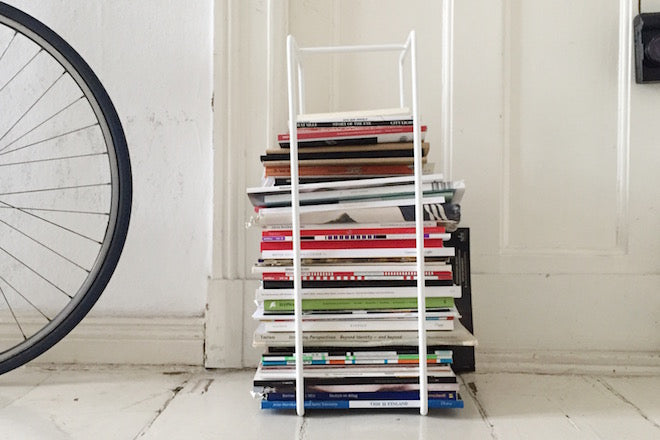
Charmaine Li, writer & editor
The name of Berlin-based writer and editor Charmaine Li pops up on the bylines of a range of titles magCulture readers will know and admire, from tech-focused Offscreen and coffee-loving Brygg, to Kinfolk, AnOther and Freunde von Freunden. As well as writing on art and culture for both print and online publications, Charmaine is an avid mag reader and collector herself. Today, she shares some of her most prized possessions with us.

As per usual, we asked Charmaine to select three magazines: a new issue, an old one and a detail that she thinks is especially fantastic.

A new issue: Genda #1
Lately, I’ve been inexpressibly drawn to contemporary dance and the idea of body awareness, so when I skimmed through the latest issue of Genda at a bookstore and spotted photographs of half-naked bodies in contorted positions and an essay touching on the topics of biopolitics and biological freedom, I was sold.
A bilingual magazine, Genda is run by two editorial teams – one in Italy and one in China. This issue is themed ‘body as packaging’ and features work from an array of photographers (like Ren Hang, Isabelle Wenzel and Paul Kooiker) that explore everything from alienation of the body to celebration of the body as one with nature. Even though I can only read about every 22nd Chinese character in the essay (my parents are from Hong Kong, I was born in Canada and skipped Chinese classes often), being immersed in these familiar symbols alongside images of body consciousness and intimacy captured by Chinese photographers felt strangely comforting.
The most charming part of the magazine was the dust jacket (a *magazine* dust jacket!). Not only for its skin colour and eco-friendly paper, but also because I noticed only after taking it off the magazine that it unfolds into a photograph poster.

An old issue: Brick, #96
Interviews, short stories, illustrations, poems, reviews, photographs. Brick is one of those rare literary journals that strikes a poetic balance between text and imagery, art and literature, new and old. The writing is also exquisite. I have a theory that there’s a positive correlation between the number of times a publication makes me misty-eyed (read: cry) and my affinity for it. So, let me give you a rundown of what it was like for this issue:
Tear #1 came when I spotted a little lovely quote by Rainer Maria Rilke at the very beginning of the magazine, on the page that lists out the publishes and copyrights before the table of contents. (I have a weakness for Rilke, and especially for encountering Rilke coincidentally.)
Tear #2 welled up while staring at a powerful photograph of an older Turkish man on the verge of tears. It was from an installation view of Voir la mer (2011), a project by French artist Sophie Calle in which she filmed people who had never seen the sea see the sea for the first time.

Tear #3 began to fall while reading a line by John Berger on whether natural forms can be looked at and perceived as messages. This essay was accompanied by an illustration of a rose by Berger with the words “text of red rose”.

And another thing: Fotografia #36
I found two English versions of Polish photography magazine Fotografia on sale a couple of years ago at a museum I can’t remember the name of, in a city I can’t recall. I only remember that I was impressed by the two covers and especially with this particular issue because it includes a DVD.



